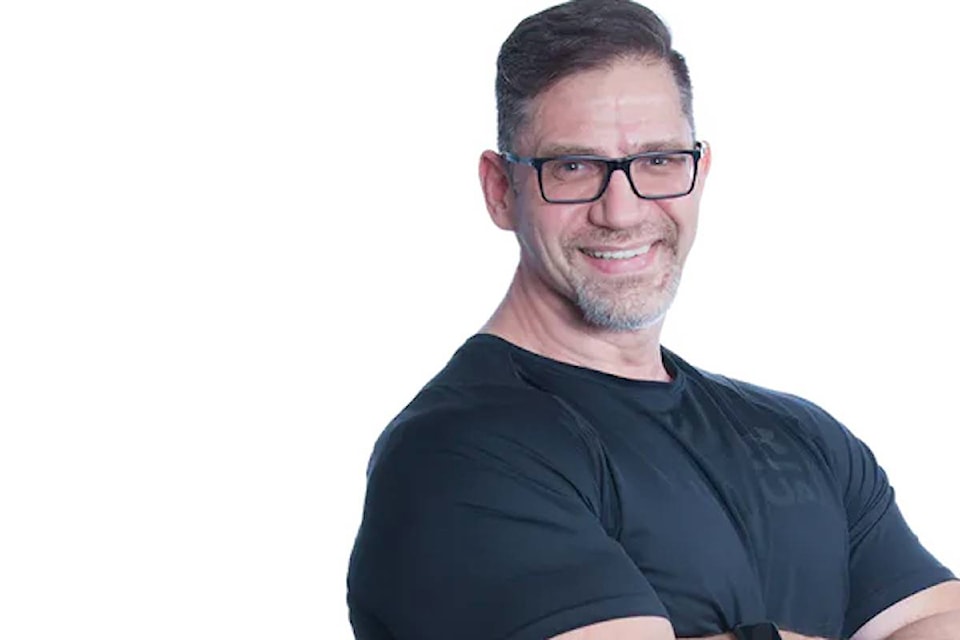I first asked the question, if we know what to do, then why don’t we do it, and I introduced the idea of incorporating change management techniques into any plan for improving health, fitness and body composition. Understanding the components of behaviour change and knowing how to apply strategies based on that knowledge is critical to realizing the goal, but what happens when you’re motivated, but you don’t know what to do?
Realizing a goal to lose weight, reduce pain, or improve performance is dependent on two things: motivation and ability. We’ve been exploring various components and techniques for behaviour change, looking at how to transform desires into the need take action and now it’s time to talk knowledge and ability and look at one of my favourite exercises, the push-up. But before we turn to the mechanics of a push-up, let’s look at three of my guiding principles regarding exercise:
Goals. What’s the purpose behind the exercise?
If it’s strength, muscular endurance, physique development, or rehabilitation, the training variables change.
Deliberate Practice. Based on the work of Dr. Anders Ericsson, a psychologist at the University of Florida, deliberate practice in its simplest form involves three things: setting very specific goals, immediate feedback, and focusing on technique before outcome.
Stress, Regression and Progression.
Strength training is about adapting to stress, the activity has to be challenging, but not destructive, so it’s critical to find the correct starting point; we do that by modifying the activity to either increase or decrease the challenge and then as we adapt and grow stronger we increase the challenge.
In the videos below, I demonstrate a basic push-up, a regression - making it easier, a progression- making it more challenging, and finally, some visual feedback I use to teach my football academy kids proper technique.
Let’s break down the technique into essential components.
Hand placement – I put my hands a little more than shoulder apart, for me, this represents where I would grip the bar on a flat bench press (my goal), and I screw them into the floor, this external rotation tightens and protects the shoulder joint.
Foot placement – my feet are slightly apart, and my heels actively pushed together, engaging the glutes, which keeps my core tight and prevents my back from sagging or swaying.
Head position – is really about maintaining body position over top of the hands. My head is forward of my hands.
If you’re not strong enough to push off the toes, pushing off the knees is fine, but the mechanics are different, and if the goal is a proper push-up off the toes, the fastest way to get there is by focusing on the negative or eccentric phase of the repetition. Emphasizing the negative allows for both overload and proper mechanics.
Given our current situation, you may or may not have exercise equipment, and one of the simplest and most effective ways to increase the challenge (progression) is to increase the time under tension, the time your muscles spend working. Stopping at the bottom of the contraction and pausing for a count of 2-3 seconds improves both technique and strength.
The concepts of deliberate practice: very specific goals, providing or obtaining some form of immediate feedback, and valuing the technique before the outcome are fundamental to my training. These are the practices of elite performers, the best in the world and if it works for them, it works for us! One of the most common technical flaws regarding the push-up is the hand and head position. A specific goal for push-ups that focuses on proper form (technique) is ensuring the body is rigid, and the head positioned overtop the hands throughout the entire repetition.
Immediate feedback is effective because it’s…well immediate. When coaching effective exercise technique the goal with any form of feedback is to link the physical sensation to the feedback, and the faster that happens the better. In one on one training a lot of feedback will be verbal, or auditory, which is good, but even better is visual feedback. When we can see what’s up and try to correct it immediately, improvements in developing that internal physical sensation associated with proper form are again a little bit faster.
Regardless of our current crisis, we need to provide ourselves feedback creatively. In the video, you’ll see I mark the floor with painter’s tape to give a target to both the hand and head placement. This ensures the body stays rigid and the exercise is most effective.
Now for the fun part, a game I like to call buzzwords to built like a brick…house, every time you hear the phrase “unprecedented times” do ten push-ups. Stay safe, stay sane.
ABOUT SEAN HAWTHORNE:
Sean Hawthorne is the owner and operator of OneLife Health and Wellness, Kelowna’s first and longest running private, personal training facility. While working in Dubai, UAE as a Contracts and Project Manager, Sean decided to leave his successful career in Civil Engineering Technology and pursue his passion for health, fitness and helping others achieve their goals. He returned to Canada in 2001, taking formal education in Exercise Science and starting his career in the field of health and fitness. Working in collaboration with their clients, Sean and his team of health and fitness professionals strive to continually improve their skills and to help everyone reach their goals.
Contact Sean:
